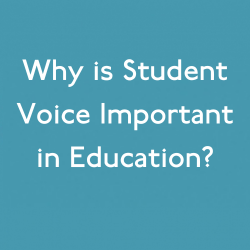For some students, the only place they feel safe is in school. In school they’re safe to make choices, safe to express feelings, safe to learn, safe to talk to their friends, and safe to simply be, right? All students should feel safe in school, but sometimes this isn’t always the case.
When examining the need for classroom safe spaces in school, we can refer to Maslow’s Hierarchy of Needs. In this theory motivation is comprised of five different levels of basic human needs. Starting at the bottom of the hierarchy, the needs are: physiological, safety, love and belonging, esteem, and self-actualization.
When we reach self-actualization, we are reaching our greatest potential. However, in order to reach this level in the hierarchy our more basic needs must be met first. This means that our students need to feel safe and supported in order to reach their greatest potential.
No, teachers are not superheroes and it’s not always their responsibility to carry every burden a child may be facing. However, we can do so much for students by simply creating a safe and supportive learning environment.
Safe and supportive learning environments are where we can help our students develop the skills they need in order to become resilient adults. So how can we build environments where our students will thrive?
Forming Bonds
The key to transforming a classroom into a safe space starts with forming strong bonds with our students. Research shows that when teachers form positive bonds with students, classrooms become supportive spaces in which students can engage in academically and socially productive ways (Hamre & Pianta, 2001).
Building relationships with our students creates a positive school culture that is inclusive and fosters both personal and academic growth within the classroom. It creates an environment that allows students to work in harmony.
It’s important that students feel respected and valued. By simply showing that we care, we are letting them know that we are worthy of their trust.
One way we can start forming those bonds is by doing frequent check-ins. Give your students that individual time, even if its just to see how they are feeling in that moment. Fitting check-ins into your schedule may be hard, so try finding time in those lulls during the school day. Try lunch or recess, and after physical education. It’s important to find time that works for you and your students.
Creative Classroom
Creativity is one of the most vulnerable forms of self-expression and it really gives us the time to fully commit ourselves to whatever it is we may be feeling. By being creative, we’re putting a piece of ourselves out into the world. We’re free to express ourselves in a way that works for us. We’re free to reflect and to truly be ourselves.
Carve out time daily for students to express their feelings. Let students choose whatever medium works best for them. Some quick options for fostering creativity in your classroom include: journaling, painting or drawing your feelings and emotions, writing short stories, or even writing a song.
Warm and Inviting Space
Studies show that our environment affects how we interact with others, our stress, our motivation, and many other factors. It’s important that our classrooms feel warm and inviting.
Allow your students to choose where they want to sit and get creative with seating options. Some options for flexible seating includes: stools, bean bag chairs, cushions, exercise balls, or even the floor.
Don’t just stop there. Research creative and inexpensive ways to switch up your classroom. Hang up inspirational photos, use decorations, add color. The options are endless! Take a look at Pinterest or Instagram for your classroom ideas!
Reflection Spaces
Allow your students time for quiet, individual reflection. This is a great restorative practice to implement. Provide your students with the space and time to separate themselves, identify their feelings, and to manage those emotions before joining their classmates.
If adults need quiet time for self-reflection, children are no different. Create a designated reflection space in your classroom where students are able to practice self-regulation.
Check out this school’s reflection space and the benefits here.
Building safe and supportive learning environments in our schools can seem challenging, but there are many things we can do to proactively ensure that students feel safe in our classrooms.
How do you build a safe and supportive space in your classroom? Tweet us at @move_thisworld or tag us in your photos on Instagram!
Sign up for Move This World’s newsletter to stay up to date on social emotional learning & classroom safe spaces.
Enter your email below!










